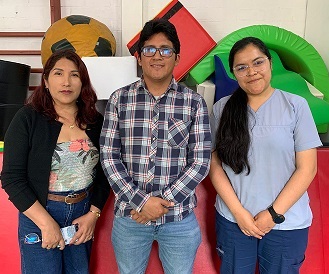On the occasion of International Mother Earth Day, which is commemorated on April 22, we at 3Love Inc. would like to share three inspiring cases of environmental care and protection in different parts of the world.
Solar energy transforms rural communities in Bolivia
In Bolivia, approximately one in three people live in rural areas, although this proportion is declining. For those who still live in small rural villages, access to water often depends on water pumps, most of which are powered by electricity. However, the national electricity grid covers only 81.5% of rural areas.
Rural communities often rely on diesel or wood to meet their needs, including farm irrigation and household activities such as boiling water, cooking and heating. However, the use of these fossil fuels has its disadvantages: they are often expensive, increase health risks, and contribute to greenhouse gas emissions and deforestation.
Verónica Villa is Secretary of the nation-wide organization, Bartolina Sisa Women Confederation and is part of a group of women who learned to operate the solar panels that were installed in her community to improve access to electricity and water. Since the installation of the solar panels, farmers have been able to significantly increase the yield of crops such as potatoes and barley thanks to the availability of water resources earmarked for irrigation. “With this solar panel, everything is natural. With the sunlight, we can get water” says Veronica.
The installation of the solar panel was part of an initiative supported by UNDP and implemented by Practical Action and the Government of Bolivia. The project facilitated training sessions that built the capacity of 380 women around the use and maintenance of the technology and empowered them to participate in decision-making processes in the community.
Young Zimbabwean girl contributes to sustainable wildlife management
According to the Food and Agriculture Organization of the United Nations (FAO), young Zimbabwean Chipo Munsaka explains that her name means “a gift”. “A gift for conserving wildlife,” she adds with a beaming smile. That perfectly sums up her commitment and contribution to addressing the growing problem of human-wildlife conflict. She has set out to “educating the community on how to live with their animals and how to live with their trees.”
Chipo works as a resource monitor in northern Zimbabwe in the Mucheni Community Conservation Area, which is being established with support from the Sustainable Wildlife Management Program. In addition to managing wildlife, the program also encourages tree planting and spreads knowledge about the value of tree preservation.
Populations of many wildlife species in Zimbabwe have been declining over the past 30 years due to consecutive droughts, habitat loss, poaching and the sale of wildlife products. At the same time, human-wildlife conflicts – whether it is elephants trampling villagers’ crops or lions and hyenas attacking their cows – continue to pose multiple challenges for rural communities.
Managed by the communities themselves, conservation areas provide safe spaces and corridors for wildlife by protecting habitat and combating poaching. They also promote community-led natural resource management, securing land tenure and benefit sharing, while helping communities develop the skills to tap into new sources of income through activities such as ecotourism, wildlife-based enterprises and sustainable natural resource harvesting.
Healing Chile’s Huapi Island
According to FAO, on a remote Chilean island in the middle of Lake Ranco, south of the Andes, native trees are making a comeback thanks to the restoration efforts of Indigenous Peoples, one of whose members is Anita Neguimán Antillanca.
Like other Mapuche-Huilliches on Huapi Island, she has planted native trees to preserve her way of life and the traditional knowledge of her people, passed down from generation to generation.
Unsustainable land use practices had transformed the island’s landscape. As the native forest was fragmented and replaced by exotic species such as eucalyptus, soils were impoverished and dried out, while the island and its population became more vulnerable to the effects of climate change. Changes in the forest also reduced the availability of water for drinking and irrigation.
Today, Anita and other families are returning the rich variety of plant life to their ancestral lands using native trees, such as laurel, which have symbolic value for the Mapuche-Huilliche people. This is part of an innovative project focused on restoring Chile’s forests.


